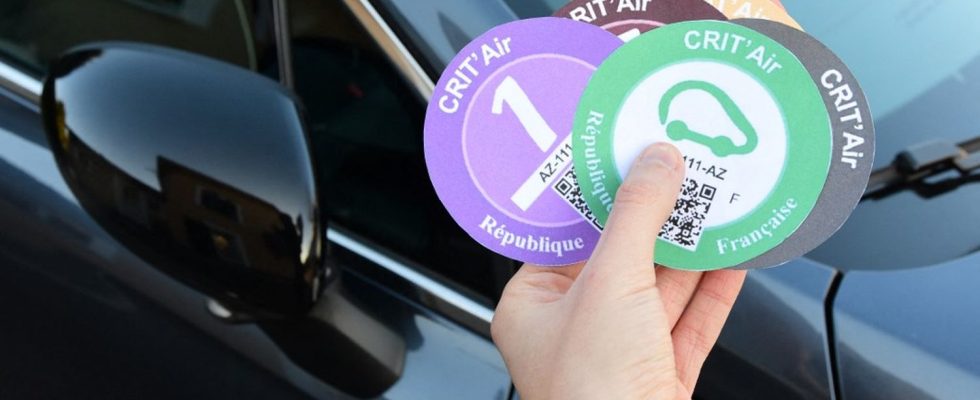The metropolises of Lyon, Grenoble and Strasbourg are continuing to establish their low-emission zones (ZFE) to improve air quality by excluding more old diesel vehicles.
Published
Update
Reading time: 3 min

To date, eleven cities have started rolling out low-emission zones (LEZs), each with their own timetable. Thus, thehe metropolises of Lyon, Grenoble and Strasbourg are continuing to set up their ZFEs to improve air quality, by excluding more old diesel vehicles from Monday January 1st. Created by the mobility orientation law (LOM) of 2019, they result in particular in traffic restrictions for certain vehicles, classified according to Crit’Air stickers.
Lyon
From January 1, vehicles with the Crit’Air 4 sticker, i.e. diesels registered “between 2001 and 2005 for cars, between mid-2000 and 2004 for motorcycles and mopeds”, will be banned from Greater Lyon, the metropolis specified on its website on November 15. Even more polluting, Crit’Air 5 vehicles (diesel registered before 2001) have already been banned there since the beginning of 2023.
The implementation, since 2020, of the Lyon ZFE has not been achieved without tension. In June, the environmentalist metropolis had to scale back its perimeter extension project and postpone the ban on Crit’Air 2 vehicles, initially planned for January 1, 2026 and which will finally be able to drive until January 1, 2028.
Grenoble
Grenoble and twelve municipalities in its metropolis will also ban the Crit’Air 4 from January 1st. The measure will be effective Monday to Friday from 7 a.m. to 7 p.m. The Crit’Air 5 had already been banned there since July. In addition to the possible national exemptions, local exemptions will also be possible. This is particularly the case for access to care, vehicles for companies in difficulty or for workers working staggered hours and those who work in a sector outside the ZFE which is not served by public transport. A period “pedagogic” of six months, without verbalization, is also planned.
Strasbourg
In the Strasbourg Eurometropolis (33 municipalities), Crit’Air 4 vehicles were also under a so-called regime. “pedagogic” for a year, but will in turn be banned from the sector on January 1 – like the Crit’Air 5 banned since the beginning of 2023. The entire area is concerned, 7 days a week and 24 hours a day. Finally , vehicles which have a Crit’Air 3 sticker in turn enter the educational phase which precedes the ban planned for January 2025.
Toulouse
The Toulouse metropolitan council adopted a deliberation in mid-October allowing vehicles carrying a Crit’Air 3 sticker to continue to circulate although they were to be banned on January 1, 2024. This measure, which concerns gasoline vehicles registered before January 1, January 2006 and diesel engines registered before January 1, 2011, could be taken because the air quality has improved in Toulouse in 2022. The more polluting vehicles, the Crit’Air 4, 5 and out of category, remain prohibited from accessing the ZFE, even if they can have an exceptional pass for 52 days per year.
The Ministry of Ecological Transition announced in July that the city’s air no longer regularly exceeded the regulatory threshold for nitrogen dioxide (40 mg per m3). The measure will nevertheless have to be re-examined if further exceedances are noted in the future. Especially since not exceeding the threshold does not mean that the air is healthy: Toulouse, like almost all French cities, still far exceeds the values recommended by the WHO, of 10 mg of NO2/m3.
Paris
The Greater Paris low-emission zone, the largest in France with 7.2 million inhabitants, has already banned the circulation of unclassified vehicles and those bearing the Crit’air 5 sticker (since July 2019) and 4 ( since June 2021). On the other hand, the ban on the circulation of Crit’Air 3 stickers has once again been postponed. First planned for July 2022, then in July 2023, this measure which concerns 77 municipalities within the perimeter delimited by the A86 has been postponed until early 2025.
